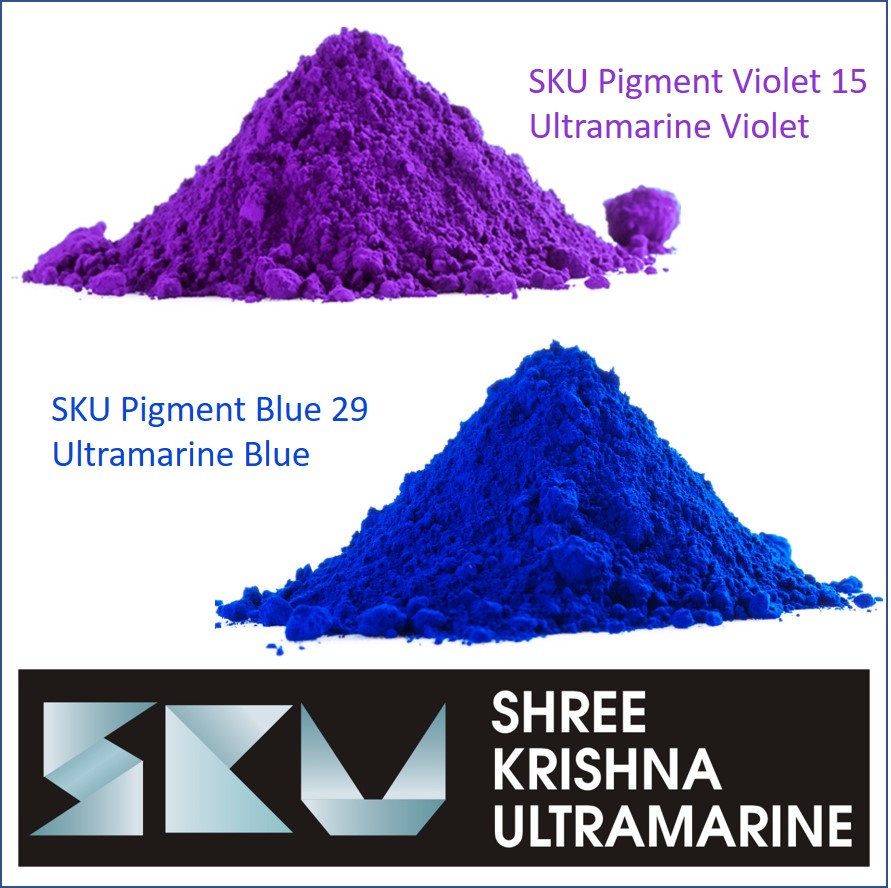Little Known Facts About Ultramarine.
Ultramarine Pigments: The Timeless Brilliance of Blue and Violet Shades

For thousands of years, color has shaped art, design, and industry. Among the most iconic hues, Ultramarine is revered for its depth and richness. Today, companies like SKU Pigments produce high-quality Ultramarine pigments, including Ultramarine Blue, Ultramarine Violet, Pigment Blue 29, and Pigment Violet. From industrial coatings and packaging, Ultramarine has become the mainstay of modern blue pigments.
The Journey of Ultramarine Through Time
The name Ultramarine comes from the Latin “ultra mare,” meaning “beyond the sea,” a reference to lapis lazuli originally imported from Afghanistan. For centuries, it was a rare treasure, used by Renaissance masters to paint sacred art. It symbolized purity and heaven.
Modern chemistry made it possible to manufacture Ultramarine pigments, bringing the once-exclusive shade into global industries. This breakthrough turned a precious rarity into a cost-effective solution for countless sectors.
Why Ultramarine Blue Leads the Industry
Ultramarine Blue pigments—the synthetic form of Pigment Blue 29—are the most widely used. Known for their stability, they are safe, eco-friendly, and non-toxic. They are used in:
• Architectural and industrial paints for rich tones.
• Automotive and packaging industries, thanks to heat and weather stability.
• Fine printing, where clarity is vital.
• Beauty products, given their non-toxic nature.
This balance of performance and safety keeps Ultramarine Blue among the top pigments.
The Elegant Appeal of Violet Shades
Ultramarine Violet offers softer tones that appeal in cosmetics. Pigment Violet derived from Ultramarine is highly dispersible, making it ideal for children’s toys.
Its sophisticated tone enhances fine art, while ensuring durability without chemical breakdown.
Pigment Blue in Modern Industries
Pigment Blue—particularly Ultramarine Blue pigments—remains a market leader. It offers weather resistance for:
• Automotive paints with lasting vibrancy.
• Consumer goods, ensuring stable shades.
• Construction materials, adding beauty and durability.
This cross-sector utility ensures Pigment Blue’s future relevance.
Why Industries Prefer Ultramarine
• Non-Toxic & Safe: Certified safe for consumer goods.
• Heat & Light Resistant: Stable in outdoor use.
• Eco-Friendly: Reduced environmental impact.
• Cost-Effective: Affordable vs. natural pigments.
• Versatile: Across paints, plastics, printing, and construction.
Applications Across Sectors
1. Paints & Coatings: Protective coatings.
2. Plastics & Rubber: Safe for packaging.
3. Cosmetics: Luxury formulations.
4. Construction: Tiles and cement.
5. Printing & Inks: Precision printing.
The SKU Pigments Advantage
SKU Pigments is a trusted manufacturer, offering innovation in Ultramarine pigments. Their product portfolio includes:
• synthetic Ultramarine for mass production.
• Ultramarine Violet and Pigment Violet for refined finishes.
• Custom shades for specialized markets.
Their reputation is built on consistent quality and eco-friendly production.
Conclusion
From a costly luxury to an eco-friendly modern solution, Ultramarine has evolved with industries. Whether it’s the timeless vibrancy of Ultramarine Blue, the subtle elegance of Ultramarine Violet, or the dependability of Pigment Blue 29, Ultramarine pigments remain indispensable.
With SKU Pigments as a leading manufacturer, industries gain beauty, safety, and performance. As Ultramarine Blue demand for sustainable pigments rises, Ultramarine will stay ahead in global markets.
Frequently Asked Questions
1. What is Ultramarine?
One of the world’s most trusted synthetic pigments.
2. What is Pigment Blue 29?
A widely used industrial pigment.
3. Where is Ultramarine Violet used?
In fine arts and specialty industries.
4. Are Ultramarine pigments safe?
Yes, non-toxic and eco-friendly.
5. Why choose SKU Pigments?
Leaders in Ultramarine innovation.